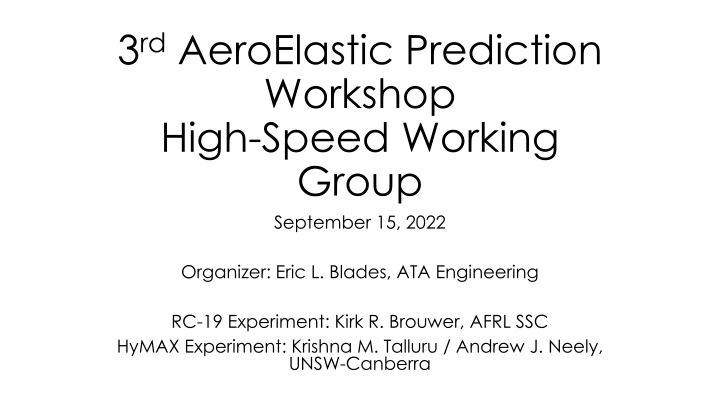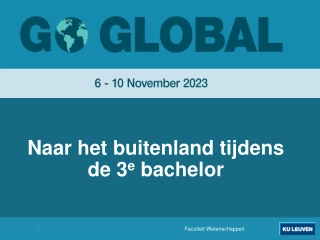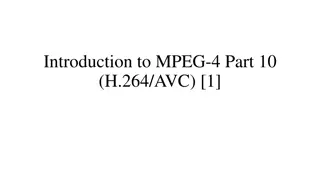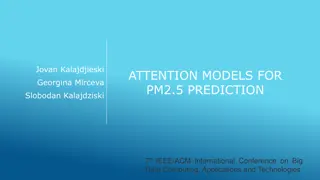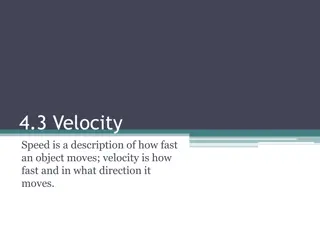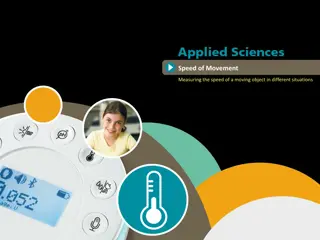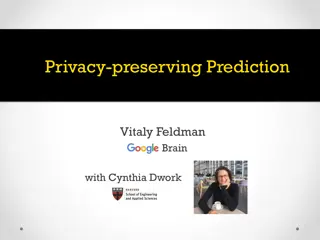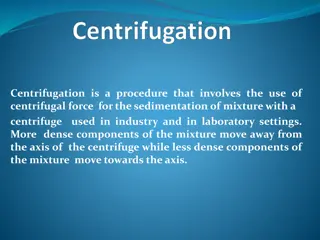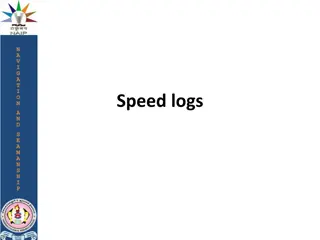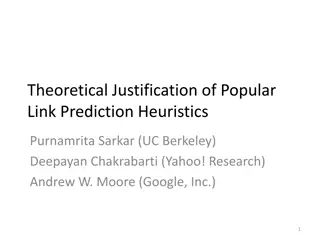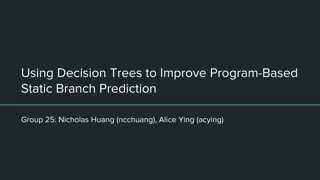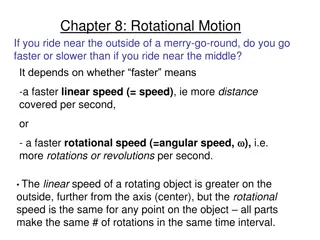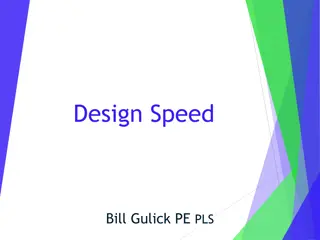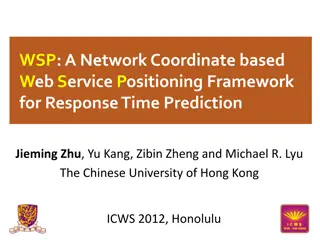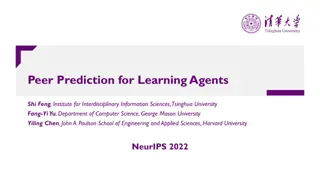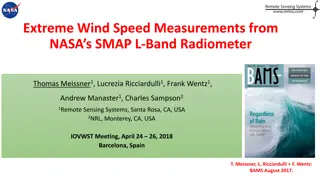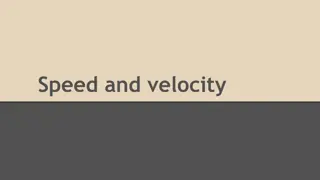3rd AeroElastic Prediction Workshop High-Speed Working Group
Organized by ATA Engineering and supported by various entities including NASA, this workshop focuses on aerodynamics experiments and toolsets in the aerospace industry. Participants will discuss cases related to aeroelastic prediction and high-speed phenomena, aiming to share progress updates and present results for future meetings. The program includes sessions on administrative matters, workshop logistics, and expected outcomes. Attendees are encouraged to register for the workshop, which will feature presentations from all working groups.
Download Presentation

Please find below an Image/Link to download the presentation.
The content on the website is provided AS IS for your information and personal use only. It may not be sold, licensed, or shared on other websites without obtaining consent from the author.If you encounter any issues during the download, it is possible that the publisher has removed the file from their server.
You are allowed to download the files provided on this website for personal or commercial use, subject to the condition that they are used lawfully. All files are the property of their respective owners.
The content on the website is provided AS IS for your information and personal use only. It may not be sold, licensed, or shared on other websites without obtaining consent from the author.
E N D
Presentation Transcript
3rdAeroElastic Prediction Workshop High-Speed Working Group September 15, 2022 Organizer: Eric L. Blades, ATA Engineering RC-19 Experiment: Kirk R. Brouwer, AFRL SSC HyMAX Experiment: Krishna M. Talluru / Andrew J. Neely, UNSW-Canberra
Open Agenda Administrative Announcements and questions Questions regarding workshop cases Intended to be a working meeting
Administrative Confirm workshop participants and tools plan to use Please provide codes plan to use RC-19 HyMAX 0 Wedge 0 Wedge 4 Wedge 2 Wedge 10 Wedge Shock Impingement Transitional Flow (Optional) X X Oscillating Wedge (2 - 10 ) Shock Impingement Transitional Flow (Optional) X X No Shock Impingement Periodic Response (Baseline) X X X X X No Shock Impingement Chaotic Response (Optional) X X X X Shock Impingement Periodic Response (Baseline) X X X X X Shock Impingement Laminar Flow (Baseline) X X X X X Organization ATA Engineering HPCMP CREATE Duke University Technion NASA LaRC POC Eric Blades Steven Lamberson Kestrel + SierraSD Earl Dowell Lior Poplingher Robert Bartels Code / Toolset Code / Toolset Loci/CHEM + Abaqus Loci/CHEM + linearFSI Kestrel + SierraSD X X X HYPATE Cradle CFD/scFLOW+MSC.Nastran Daning Huang Yuya Ando HYPATE Cradle CFD/scFLOW+MSC.Nastran Penn State X X X X X Seeking volunteers to provide progress updates for future meetings
Workshop Programmatics Results due end of October Details for both experiments available at AePW3 website https://nescacademy.nasa.gov/workshops/AePW3/public/wg/highspeed Monthly telecon slides posted as well Post-processing scripts also provided for to aid comparisons and ensure consistency of results Scheduled weekend before SciTech (Jan 21-22) SciTech is Jan 23-27 at National Harbor, MD No plans to provide virtual access to the workshop since hybrid approach hasn t been very effective in the past Must register for workshop and additional cost Cost is $300 (early registration) or $400 for AIAA members and $500 for AIAA non-members Can attend workshop without registering for conference Plan is to present all 4 working groups in serial Allow participants to see results from other WGs Presentations Current plan is 10-15 minutes for each participant (may vary depending on number of participants) Organizing committee will provide overview of cases for each WG so individual participants can just focus on presenting their results
Progress Updates RC-19 Open to WG HyMAX Open to WG Encountered any issues to share with WG?
ATA Using Subdomain Modeling Approach for RC-19 Fluid Domain When modeling entire wind tunnel, estimated Mach number in test section was ~2.2 (too high) Rather than use uniform inflow conditions at subdomain inflow Planning to scale M, T, and P to reported values Scaling based off centerline values and applied to all points on inflow plane Will preserve the reflected shocks present in test section Inflow Plane for FSI Domain FSI Domain 1.9 < M < 2.2 Pressure (Pa)
RC-19 Questions Response to questions from Kirk Brower/AFRL Double-click the image on left to open the PDF and see responses to all questions
HyMAX Questions Relative position of shock generator to test article is correct in CAD file Viscous vs inviscid mesh for shock generator? Left as choice to participants
Naming Convention Clarification Per email from Liam McQuellin 08/30 Originally the numerical value appended to the file name was specifying wedge angle of attack (alpha). We changed this to specify flow deflection angle (theta) but a version control issue on our end meant these updated files were not passed across to the working group. The numerical value in the CAD file name is now specifying the flow deflection angle
Test Stand Leading Edge Radius Per email from Liam McQuellin 09/12
Next Steps Collective AePW group meetings 1st Thursday of each month (currently on bi-monthly schedule) Next meeting is October 6th, 2022 @ 10:00 AM CT Please share with colleagues to increase participation
Questions and Comments
